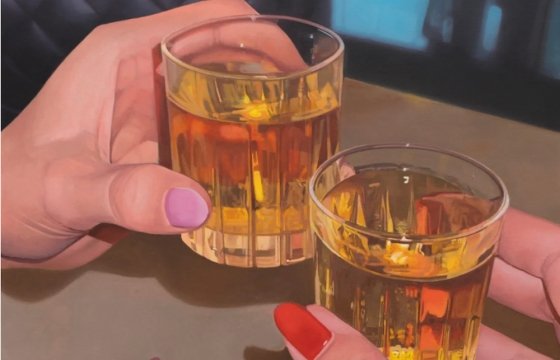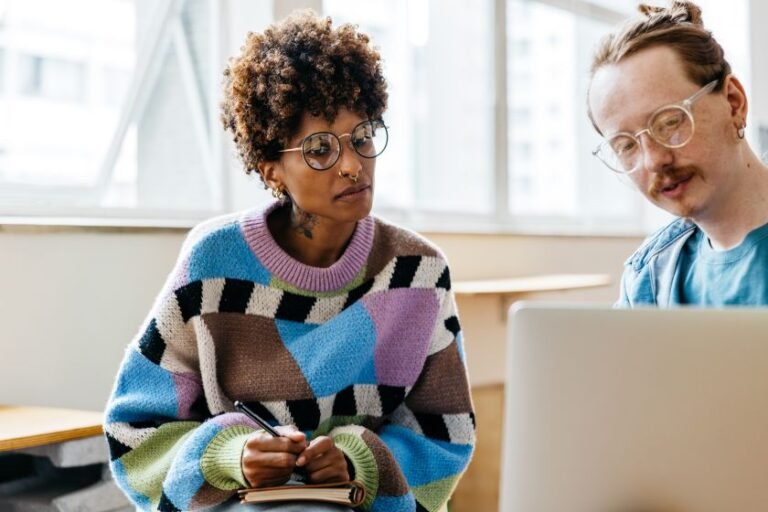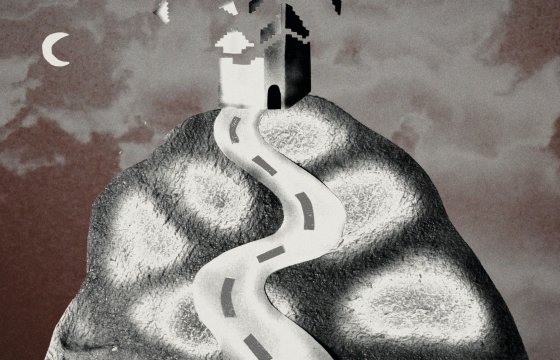

Welcome to the 291st installment of A View From the Easel, a series in which artists reflect on their workspace. This week, artists draw energy from the hilly landscape of San Francisco and relish the intertwinement of art and life in Greenwich Village.
Want to take part? Check out our submission guidelines and share a bit about your studio with us through this form! All mediums and workspaces are welcome, including your home studio.
Gabrielle Benak, Manhattan, New York

How long have you been working in this space?
Eight years!
Describe an average day in your studio.
I would say it is more of an average night! I am currently working as a teaching artist during the day, teaching watercolor and drawing classes to children and adults of all ages. So, between my classes and being more of a night person, I make sure to spend my evenings working on new pieces or experimenting with pending ideas. I like to work in multiples. I think it is a key part of my practice; things need time to dry, and I do not like to waste creative energy. I also can have so many ideas at once that don’t necessarily translate into one piece, so it’s helpful to get them all out in their own capacities. Most of the time I am listening to music or talking on the phone with a friend while working, but there are times I work in silence (sometimes without even realizing it), completely present and in focus.
How does the space affect your work?
Thematically, a lot of the work I make is about self-documenting, so the space very literally affects the work. This studio has been my home and the nucleus of my work for so long, it bleeds into the work in the best way. There are a few pieces I can think of that actually include a rendering of my studio. It truly is an extension of myself. While it is inspiring, it can also be a challenge to live with your work in such close quarters. A lot of pieces are made from very emotionally charged topics and experiences, and living with the depictions can be intense. Sometimes, I need to live with a piece to fall in love with it and get rid of any doubt that brews, a struggle many artists know well.

How do you interact with the environment outside your studio?
I am so grateful to be in the location I am. Being born and raised in New York, I have always felt the intrinsic creative energy of Greenwich Village and loved to come visit. My parents used to take me to Cafe Wha?, a village staple, when I was a small child to hear the live band. This neighborhood has both historical and personal significance to me as an artist, and it is a dream to call this my neighborhood. I am minutes away from most galleries, which makes seeing shows, going to openings, and meeting other artists so accessible. The building is also full of other artists, making it feel like a creative hub. I love to invite my neighbors to any open studios I host and they are incredibly supportive.
What do you love about your studio?
I love the fact that my studio is my home. There is very little to no separation between my art and my life. It is interdisciplinary, and I am grateful for that.

What do you wish were different?
Not much! I would love more space to be able to work bigger and push the boundaries of my work and scale, but I would never want to let this space go. A future goal would be an additional space to make larger work.
What is your favorite local museum?
I really like the Cooper Hewitt Museum. While it is not exactly in my neighborhood, it is an easy train ride uptown.
What is your favorite art material to work with?
Definitely watercolor. Lately, I have been experimenting with painting with watercolor on wood panel and it has really been pushing the boundaries of the medium as I knew it.
Jessie Laura, San Francisco, California

How long have you been working in this space?
Two years.
Describe an average day in your studio.
I start around 8:30am with admin work to clear my head. I move on to some research to set a direction, unless I left something unfinished from the previous day. I put on a podcast, or an audiobook (currently listening to Anne Truitt’s Turn) and begin working. I usually break for lunch and a stretch, then return until late afternoon. I tend to work on several pieces at once, circling between them. The rhythm is quiet but steady.
How does the space affect your work?
My studio is in the same building as my apartment, just a flight of stairs away. It feels like an extension of home, with the privacy to focus. The morning light through my east-facing windows is beautiful and always changing. This is crucial to my work, which explores space, perception, and the nuanced relationship between object and viewer. The interplay of light and shadow, dynamic negative space, and composition and rhythm are central themes in my practice.

How do you interact with the environment outside your studio?
I try to attend gallery openings most weeks and monthly art walks like First Thursdays in Downtown and First Saturdays in Dogpatch. Minnesota Street Project, located in Dogpatch, houses 14 independent galleries and hosts events throughout the year, including artist talks, book fairs, and open studios. I’ve participated in ArtSpan Open Studios in previous years. These practices, along with regular time in nature, at the beach, in the woods, or in the headlands, help me stay grounded and connected.
What do you love about your studio?
The natural light, the architecture, and its location. The studio is in a classic San Franciscan Edwardian building from the 1910s, with arched doorways and bay windows that add charm and warmth. My neighborhood is full of steep hills, so walks are both meditative and physically energizing. I enjoy exploring different neighborhoods, each with its own vibe. San Francisco is full of beauty and eccentricity, and I love feeling part of a creative and genuinely kind community.
What do you wish were different?
It’s a bit loud at times, especially during the afternoon. I usually take that as a good moment to shift gears, head out for a walk with my pup, or listen to some music with noise-cancelling headphones and keep going.

What is your favorite local museum?
The de Young. I got married there, so it holds both artistic and personal meaning. It’s the city’s oldest museum, with a great mix of contemporary and historical work. Two highlights for me are the Harmon Observation Tower, with a 360-degree view of San Francisco, and James Turrell’s Skyspace “Three Gems,” a meditative space that invites you to slow down.
What is your favorite art material to work with?
My favorite material is paper. It’s democratic in the best way: accessible, flexible, and open to transformation in endless ways. There’s something humble and profound about it.


